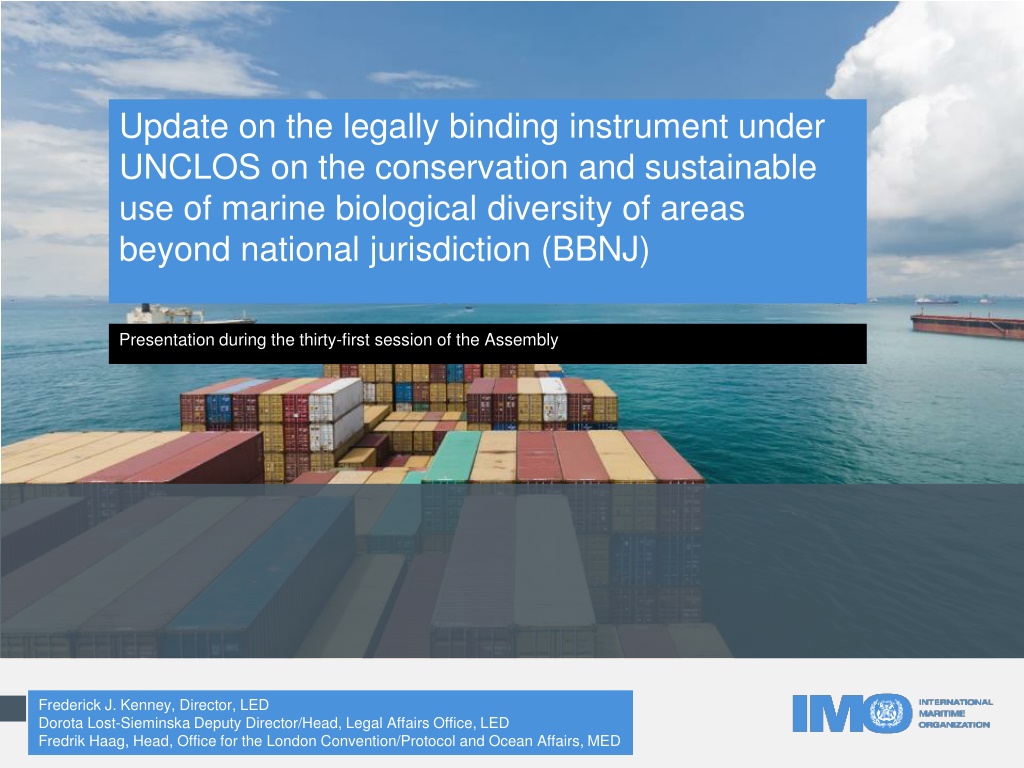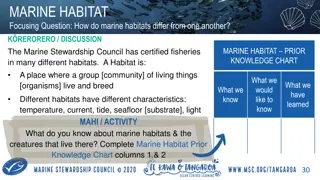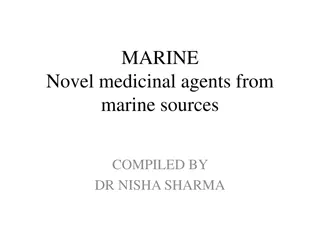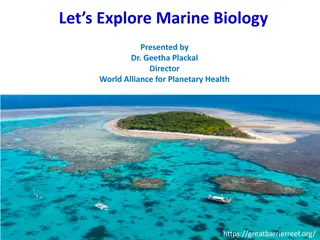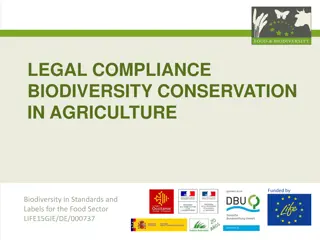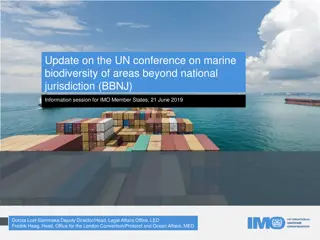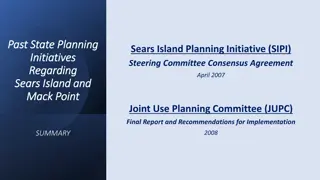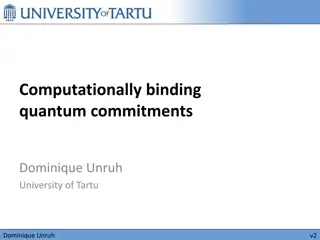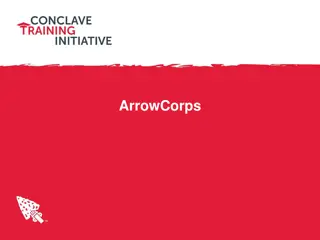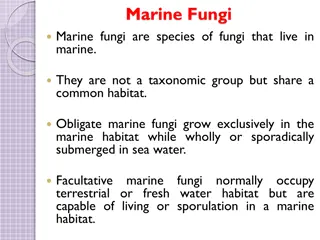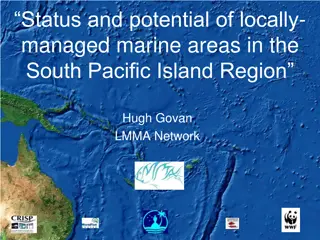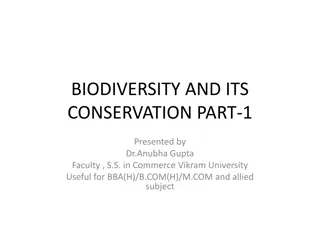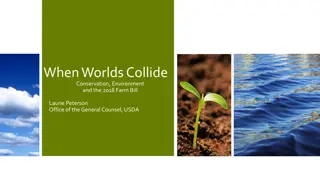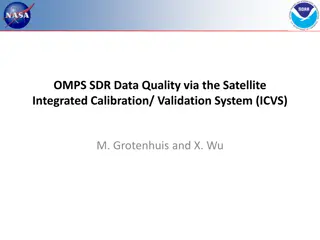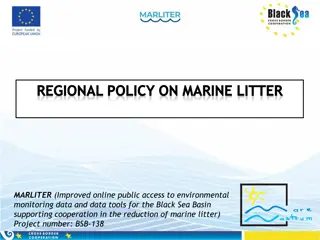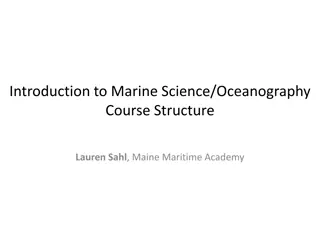Update on Legally Binding Instrument under UNCLOS for Marine Biological Diversity Conservation
United Nations General Assembly is developing a treaty under UNCLOS for conservation of marine biological diversity in areas beyond national jurisdiction since 2015. The objective is sustainable use of marine genetic resources, area-based management tools, environmental impact assessments, capacity-building, and technology transfer. Intergovernmental conferences have been held, and progress has been made on key topics. Various organizations are involved, and negotiations are ongoing for the international cooperation on marine biodiversity conservation.
Download Presentation

Please find below an Image/Link to download the presentation.
The content on the website is provided AS IS for your information and personal use only. It may not be sold, licensed, or shared on other websites without obtaining consent from the author. Download presentation by click this link. If you encounter any issues during the download, it is possible that the publisher has removed the file from their server.
E N D
Presentation Transcript
Update on the legally binding instrument under UNCLOS on the conservation and sustainable use of marine biological diversity of areas beyond national jurisdiction (BBNJ) Presentation during the thirty-first session of the Assembly Frederick J. Kenney, Director, LED Dorota Lost-Sieminska Deputy Director/Head, Legal Affairs Office, LED Fredrik Haag, Head, Office for the London Convention/Protocol and Ocean Affairs, MED
Background Why a BBNJ treaty? 2015: UNGA decides to develop an international legally binding instrument on BBNJ, following almost a decade of discussions Objective: Conservation and sustainable use of marine biological diversity of areas beyond national jurisdiction Focusing on five main areas: Marine genetic resources (MGR); Area-Based Management Tools (ABMT); Environmental impact assessments (EIA); Capacity-building and the transfer of marine technology (CB&TT); Cross-cutting issues: institutional arrangements, the clearinghouse mechanism, general elements, principles and approaches and international cooperation 2
Background, continued In 2017, the General Assembly decided to convene an intergovernmental conference (IGC), to develop the instrument The Secretariat has participated throughout the preparatory phase leading up to this conference (since 2008) 2016-2017: Preparatory Committee (four sessions). Secretariat attended, providing written input, statements and organized side-events (jointly with Member States and ICS) to inform of IMO s work 3
Background, continued IGC-1: 4 to 17 September 2018 IGC-2: 25 March to 5 April 2019 IGC-3: 19 to 30 August 2019 The fourth session is scheduled for 23 March to 3 April 2020 All UN Member States are represented at the Conference and the negotiations are undertaken between the representatives of those States Groups of States (such as Group of 77, African Group, SIDS) play a big role in the negotiations IMO, same as other organizations, like FAO, IOC, ISA, have an observer status at the Conference 4
Current state of discussions following IGC-3 Addressed and made progress on the main topics: Marine genetic resources (MGR); Area-Based Management Tools (ABMT); Environmental impact assessments (EIA); Capacity-building and the transfer of marine technology (CB&TT); Cross-cutting issues: institutional arrangements, the clearinghouse mechanism, general elements, principles and approaches and international cooperation; Agreed that the new instrument should: be fully consistent with UNCLOS; not undermine existing relevant legal instruments and frameworks and relevant global, regional and sectoral bodies, such as IMO 5
Summary: Area Based Management Tools under the BBNJ instrument Area Based Management Tools (ABMTs) relate to the establishment of e.g. marine protected areas (MPAs) May affect areas established by IMO such as PSSAs, Special Areas, routing measures, etc. It is important to ensure that measures adopted by BBNJ will not conflict or interfere with measures adopted by IMO, as well as internationally established legal framework on navigation rights. 6
Environmental Impact Assessments Environmental Impact Assessments (EIAs) are not explicitly referenced in IMO s regulatory framework in a formal sense. However, the process of evaluating the impacts of activities regulated by IMO are embedded in several ways. Discussions at the IGC includes a variety of options for possible EIAs under the new BBNJ treaty Possible list of activities which do not require EIA shipping (?) Any new tools developed under the instrument should be complimentary in nature to the existing IMO tools, standards and guidelines, and work in tandem with the existing IMO regime. 7
Capacity building and the transfer of marine technology States, directly or through competent international organizations, shall promote cooperation in CB&TMT to assist developing countries in achieving the objectives of the instrument Promoting technical cooperation constitutes a major part of the IMO s work, thus IMO should be recognized as one of the competent organizations 8
Institutional arrangements decision making body BBNJ decision making body: Conference of Parties Scientific/technical body (GESAMP) Other subsidiary bodies Decision making body will be responsible for cooperation and coordination with relevant global, regional and sectoral bodies such as IMO 9
Institutional arrangements - Secretariat BBNJ secretariat, options: o New independent secretariat o DOALOS o IOC/UNESCO o Shared secretariat? Role for IMO? The secretariat shall manage the clearing-house mechanism and coordinate consultation with relevant organizations on ABMTs and EIAs 10
Treaty law Currently: diplomatic conference The new instrument will be adopted under UNCLOS Open to all States Final clauses: depositary, EIF still to be decided Relevant global, regional and sectoral bodies will be responsible for the implementation and enforcement where appropriate 11
IMO Secretariat approach to the IGC Throughout the PrepCom and the IGC, the IMO Secretariat has contributed to and organized several side events, providing input on IMO's work Side events organized together with several IMO Member States, ICS and Norwegian Shipowners Association The Secretariat has made statements, also together with other UN entities IMO Secretariat works closely with United Nations and other specialized agencies (e.g. the FAO, ISA, UNEP, IOC of UNESCO and ILO) to coordinate the position and to ensure that the new instrument will not impact or impede the roles and responsibilities of other relevant global, regional and sectoral organizations. 12
Next steps The fourth and final session (IGC-4) will be held from 23 March to 3 April 2020 Will consider a revised draft text of the future treaty, which has been made available last week, at: https://www.un.org/bbnj/content/fourth-substantive-session The Secretariat will continue to follow the process and participate in the meetings, and will inform IMO Member States of the developments on a regular basis (MSC, MEPC, Council) 13
Considerations for IMO Member States As the BBNJ negotiations draw to a close, IMO delegations need to be aware of those areas where there may be a potential impact on the work of IMO. Some proposed procedures under the BBNJ instrument could inflict on the role and mandate of IMO, its instruments and processes Ensure that IMO Member States positions at the BBNJ Conference are in line with their interests at IMO 15
Considerations for IMO Member States To assist IMO Member States, the Secretariat provided a summary of the most relevant provisions to C 122 (see C 122/INF.7): 16
What happens next? Once the Secretariat has analysed the new text, an information session for Member States will be held (January). The Secretariat will attend IGC-4 in late March/early April. Further information will be provided to Council, MSC and MEPC in 2020. 17
Thank you for listening www.imo.org www.imo.org
